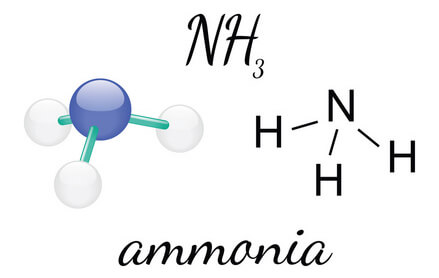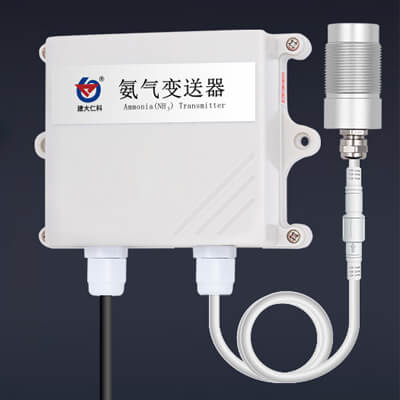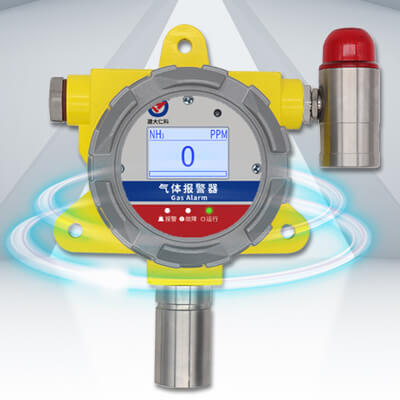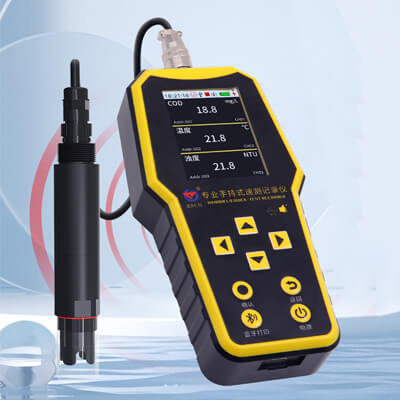Ammonia is the most dominant alkaline gas in the atmosphere and plays an important role in aerosol nucleation. It is also the key to causing heavy haze pollution and excessive nitrogen deposition. Ammonia is important to life on Earth and is found in almost all foods and fertilizers. Ammonia is also contained in the ingredients of many medicines. In the normal environment, ammonia exists in the form of gas. When the ammonia gas is pressurized or cooled, it forms liquid ammonia, which can be used as a refrigerant.
What is ammonia gas?
Ammonia is an inorganic compound with the chemical formula NH₃. Ammonia gas is a colorless alkaline gas with a strong pungent odor. Ammonia smells like urine or sweat. Soluble in water to form ammonium hydroxide solution. It also has dangerous properties such as corrosiveness and can burn the mucous membranes of the skin, eyes, and respiratory organs. It can be used to make fertilizers and refrigerants. It can also be used to produce explosives, dyes, plastics and some medicines. Ammonia gas is easily compressed, forming a clear, colorless liquid under pressure.

The structure of the ammonia molecule is very simple, a triangular structure formed by a nitrogen atom and three surrounding hydrogen atoms. It is relatively light and easily floats in the atmosphere. Ammonia gas is highly irritating and, in high concentrations, can pose a hazard to workers and the public. Excessive ammonia inhalation by animals can damage the respiratory tract and lungs, cause other diseases, and in severe cases can lead to death.
How is ammonia gas formed?
Ammonia comes from a wide variety of sources. Use of ammonia-containing cleaners, human excrement and sweat can decompose and produce ammonia gas. Animal feces and carcasses also produce ammonia as they decompose. There are also smoke from smoking and refrigerants in air conditioners that also produce ammonia.
Indoor ammonia comes primarily from concrete additives used in building construction. Additives contain a lot of ammonia substances. In the wall, with the change of environmental factors such as temperature and humidity, it will be reduced to ammonia and released. For livestock farmers, ammonia gas is a key monitoring gas in pig houses or cattle farms. Because if animal feces and leftover feed residues are not disposed of in time, a large amount of ammonia gas will be produced after high temperature catalysis. After animals inhale ammonia, their immunity will be reduced, resulting in illness or death.

What is ammonia gas used for?
Ammonia is widely used in industrial production. It can be used in the chemical industry, light industry, chemical fertilizer, synthetic fiber, pharmaceutical and other fields. When ammonia evaporates, it absorbs a lot of heat and effectively lowers the temperature. So it is often used to make refrigerants. Ammonia gas is soluble in water, and a certain amount of ammonia gas can be dissolved in water to make ammonia water, which can be used as a cleaning solution. Household ammonia cleaning solutions contain between 5% and 10% ammonia. Industrial ammonia cleaning solutions can be 25% or higher in concentration and are corrosive. Applying ammonia directly to the soil in a field creates fertilizer for crops, lawns and plants.
- Manufacture ammonia water, base fertilizer, compound fertilizer, nitric acid, soda ash, etc.
- Make detergent, neutralizer, and flavonoid extractant.
- As biofuel provides energy.
- Used as an aminating agent in the organic industry, a catalyst for the production of thermosetting urea-formaldehyde resins.
Ammonia is used by the inorganic industry to prepare various iron salts. - Wool spinning, satin, printing and dyeing industries are used to clean wool, woolen cloth, and gray cloth, to dissolve and optimize the pH, and as a dyeing aid.
- Used as raw materials for ammonia-containing inorganic salts and organic intermediates, sulfa drugs, polyurethane, polyamide fibers and nitrile rubber.
How is ammonia gas harmful?
For humans
When ammonia gas is mixed with air, and the concentration reaches a range between 16% and 25%, it will burn and explode when it encounters an open flame. In addition, ammonia may explode after being stored in a container and heated. If ammonia leakage is found, the staff should cut off the power and evacuate in time. In addition to the fire and explosion hazards, ammonia can be toxic to humans when inhaled. Ammonia gas is easy to attach to water and burn people's eyes, mouth, throat, lungs and skin. Ammonia is highly corrosive, and when ammonia gas enters the human body, it can damage the respiratory system, disrupt vision and burn the skin on contact. If a person is exposed to an environment with an ammonia concentration of 200ppm for a short period of time, the eyes and mucous membranes will be irritated. If the ammonia concentration reaches 1500ppm, poisoning will occur. When the concentration exceeds 2500ppm, it will be life-threatening.
| Ammonia level | Animal reaction | Ammonia level | Animal reaction |
|---|---|---|---|
| 5ppm | minimum detection level | 35ppm | Animals can be exposed to the environment for 10 minutes |
| 6ppm | Eye and respiratory problems occur | 40ppm | Human headache, nausea, loss of appetite |
| 11ppm | Decreased animal performance | 50ppm | Pneumonia in animals |
| 20ppm | Maximum dose to which an animal can sustainably be exposed in the environment | 100ppm | The airway of the animal is severely damaged |
| 25ppm | Animals can be exposed to the environment for up to 8 hours | >100ppm | Animals start dying |
For animals
In animal husbandry and poultry farming, ammonia concentration is a necessary monitoring indicator. Farmers understand the hazards of ammonia gas. When people enter the farm, they feel very uncomfortable. They can not only smell the strong ammonia smell, but also stimulate the eyes to water. In breeding plants such as chicken coops and pig houses, ammonia gas can corrode and irritate the respiratory tract of animals, causing tracheal edema and even necrosis. Reduce animal resistance and affect the healthy growth of animals.

For the environment
Ammonia not only affects human health, but also has great destructive power to the natural environment. Ammonia, as an ammonia-hydrogen compound, reacts with weakly acidic substances in the air to make the deposited weakly alkaline substances acidic. The main cause of soil acidification is ammonia pollution. Ammonia is also very important to water pollution. It will affect water quality and damage the water ecosystem, causing ammonia pollution in the irrigation of vegetable crops.
How to detect ammonia?
In the laboratory, we can test ammonia with moist red litmus paper, if the test paper turns blue, it proves ammonia. Or use a glass rod dipped in concentrated hydrochloric acid (or concentrated nitric acid) to approach it. If white smoke is produced, it proves that there is ammonia gas. These methods are relatively complicated to operate, and can detect whether there is ammonia in the current environment, but cannot accurately measure the concentration of ammonia. Therefore, the industry often uses ammonia detectors to monitor ammonia levels.
Ammonia detector types for gas
The wall-mounted ammonia sensor is a monitoring device for farms. It can be installed on a stand or wall to achieve 24-hour uninterrupted monitoring. The ABS waterproof casing can prevent moisture in the air from entering the device and corroding the sensor. The unique breathable membrane effectively prevents the passage of other dust gases while ensuring the easy passage of ammonia gas. The measurement accuracy is high, up to within ±2%FS, and the repeatability is up to within 2%. This ammonia sensor has various ranges(0~50PPM, 0~100PPM, and 0~500PPM). It is generally recommended to use an ammonia sensor with a range of 0-100 ppm for poultry farming.

This ammonia sensor is suitable for monitoring pig houses, cowsheds, chicken houses, duck tongues and other farms. It is also commonly used in greenhouses, schools, hospitals, warehouses, industrial plants and other places that need to detect ammonia.
For the farming industry, they need to monitor ammonia levels across multiple farms. If you choose this type, you only need to install ammonia sensors at different monitoring points, and the data of all measuring points can be uploaded to the monitoring platform in a unified manner. Through the monitoring platform, you can check the real-time ammonia value or historical ammonia level of each pig house or chicken house. The wall-mounted ammonia sensor can monitor online 24 hours a day. Once the ammonia concentration exceeds the standard, an alarm will be sent immediately by text message, phone call, email, etc. Prompt the administrator to take measures, or automatically start the fan to discharge the ammonia gas.
The portable ammonia detector is a hand-held detection device that is convenient to move and measure at any time. Users can carry it with them to measure ammonia levels in different environments. Its advantage is that it can be flexibly used in confined spaces, such as in fire-fighting projects, and can be carried with you to measure whether the ammonia concentration in a closed space exceeds the standard. Built-in battery power supply, free from wiring problems. The clear LCD display shows the value in real time. It can also read clearly in the dim well. It has a data storage function, and can export historical data to a computer through a USB data cable.

The portable ammonia gas detector can continuously monitor the ammonia concentration. It is suitable for explosion-proof, toxic gas leakage rescue, underground pipeline or mine and other places for on-site detection of hazardous gas.
The portable ammonia detector is easy to operate and easy to maintain, meeting the reliability requirements of industrial safety monitoring. The shell is high-strength engineering plastics, with composite non-slip rubber. Waterproof and dustproof. When the gas concentration is detected to exceed the standard, the detector will have four alarm modes, namely vibration, light, buzzer and numerical alarm.
The fixed ammonia detector is a high-performance instrument for continuous online monitoring of ammonia. The detector is a flameproof structure as a whole, which can be used in high concentration or flammable and explosive places. The overall shell is made of high-strength stainless steel, which can work normally in harsh environments. The fixed ammonia gas detector displays the concentration in real time on the computer through the alarm controller and management software. Data and alarm status can also be transmitted to the safety control center through the optional wireless module.

Fixed ammonia detectors are widely used in various industries such as petroleum and petrochemical, metallurgy, environmental protection, gas, fire protection, municipal, chemical, shipbuilding, electric power, process control, sewage treatment, emergency rescue monitoring, etc.
The fixed NH3 gas detector is compatible with various controlled alarms, PLC, DCS and other control systems, and can be monitored remotely. The matching infrared controller can remotely control the alarm point setting, zero calibration and address modification. When the ammonia level is detected to exceed the standard, there will be two levels of sound and light alarm, and the alarm point can be set.
Ammonia detector types for water
This ammonia nitrogen detector is mainly used to test the level of ammonium ion content in water. It is a device for measuring the concentration of ammonia nitrogen in water (combined nitrogen in the form of free ammonia NH3 and ammonium ion NH4+). It can automatically perform temperature and pH compensation, and is suitable for high-precision measurement in various environments. . Insert the electrode into the water to obtain the value directly.

It is suitable for the detection of ammonia nitrogen concentration in large, medium and small water plants, industrial and mining enterprises, domestic or industrial water, so as to control the ammonia nitrogen in the water to meet the specified water quality standards.











